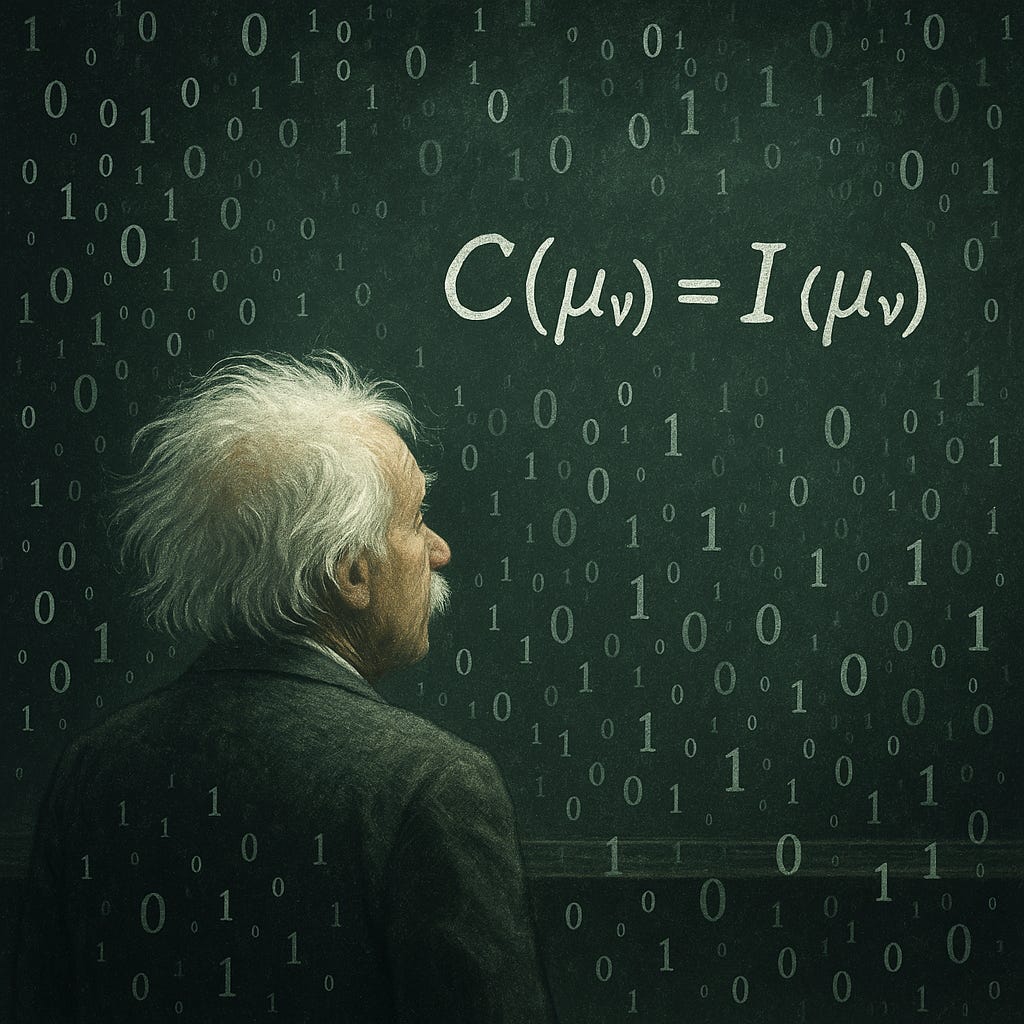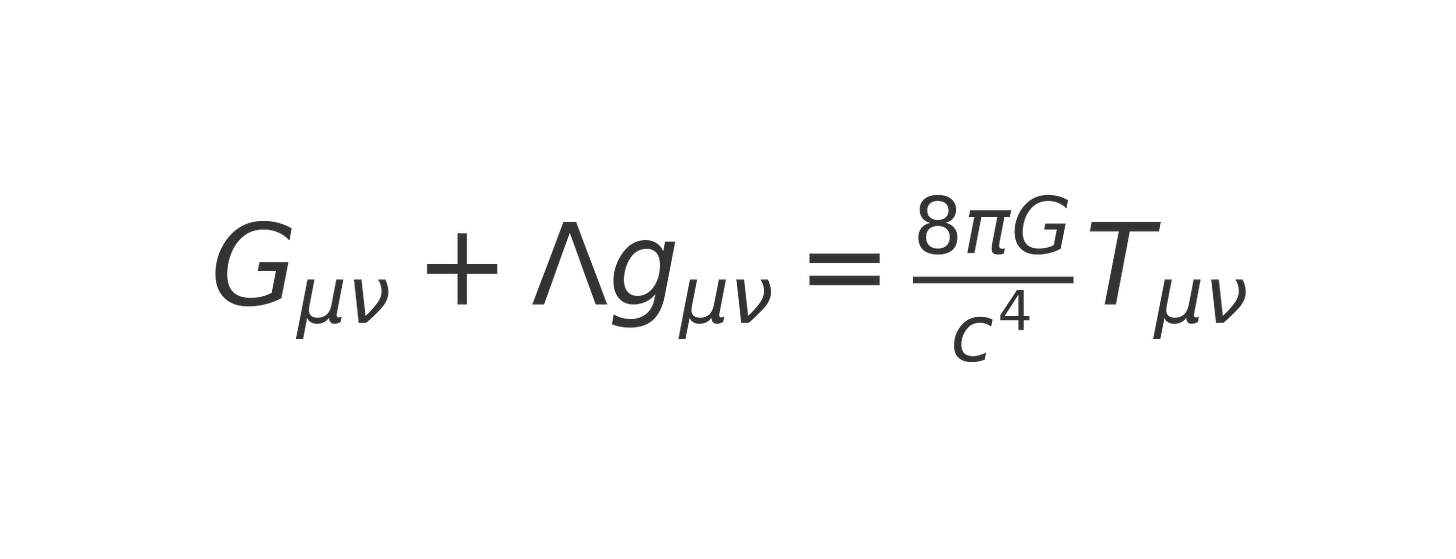Physics, as we usually learn it, rests on a handful of pillars: space-time as the arena, gravity as the bending of that arena, dark matter to account for missing mass, and dark energy to explain cosmic acceleration. Each is treated as a necessary component of the universe’s architecture.
But what if they aren’t necessary at all?
What if the only true substrate is information — and the rest are stories we’ve written to make sense of its behavior?
The Redundancy of Space-Time
Space and time are usually described as the stage upon which reality unfolds. Yet Einstein himself admitted, “Space-time does not claim existence on its own, but only as a structural quality of the field.”
In an information-first framework, there is no stage. There are only relationships, encoded and evolving. Spacetime is the story we tell when information patterns cluster into continuity. It is not fundamental — it is emergent.
Gravity as a Bias Toward Coherence
Newton gave us forces. Einstein gave us curvature. But what if “gravity” is neither?
From an information-first view, what we call gravity is the substrate’s bias toward coherence. Information tends to cluster, to persist. Atoms bind. Stars form. Galaxies cohere. Not because an invisible force is pulling them, but because informational structures that hold together are favored over those that dissipate.
Gravity is not a thing. It’s a description of coherence asserting itself.
Dark Matter and Dark Energy: Physics by Patchwork
When galaxies spin faster than visible matter allows, physicists invent “dark matter.” When the cosmos expands faster than expected, they posit “dark energy.”
Physicists keep introducing new entities to patch the gaps — from dark matter to dark energy, and most recently, entirely new hypothetical particles proposed to act as stand-ins for dark energy itself (Phys.org, Sept 2025). None of these have ever been observed. They are placeholders invented to preserve matter-first equations, underscoring how often the model requires invention rather than discovery.
This is patchwork physics. It’s like adding epicycles to Ptolemy’s Earth-centered system: endlessly adjustable, but missing the deeper reality.
From an information-first view, no “dark” placeholders are required. The coherence bias of information itself explains why galaxies cohere and why cosmic structures evolve without invoking invisible scaffolds.
Rethinking General Relativity
Einstein’s general relativity describes how mass-energy curves spacetime. But if spacetime is not fundamental, the picture shifts.
In information-first physics, what we perceive as curvature is the redistribution of information to preserve coherence. Mass isn’t “warping” a fabric; informational structures are clustering into more stable configurations.
In crude shorthand, instead of:
G(mu,nu) + Lambda * g(mu,nu) = (8 * pi * G / c^4) * T(mu,nu)
we might write an informational analogue:
C(mu,nu) = I(mu,nu)
where C represents coherence bias (the “gravitational tendency” of information to cluster) and I represents the informational content of the system.
This isn’t a full equation — it’s a sketch. But it illustrates how information-first shifts the story: curvature is replaced by coherence, matter-energy is replaced by information density.
Information as Foundation
As physicist Carlo Rovelli, a leading voice in loop quantum gravity and the philosophy of physics, put it: “The world is not a collection of things, it is a collection of events. The world is made of networks of elementary processes of interaction.”
Rovelli’s point is that reality is fundamentally relational — a web of interactions rather than a stockpile of objects. That’s an informational description at its core. Relations are information. Matter is what relations look like when they stabilize.
Information comes first. What we call space, time, gravity, dark matter, and dark energy are higher-order encodings. They are more the “map” of the universe, not the universe itself. They help describe what we observe but they are not fundamental.
Why This Matters
Cutting through these constructs isn’t just philosophical. It means we can look at physics without patching it with invisible placeholders. Rather than relying on new and exotic - and completely made up - particles, waves and forces, information as the fundamental basis of reality offers a clean, mathematically lean, observationally coherent structure from which to build the next levels of understanding. Then we can ask cleaner questions:
How does information organize into matter?
How does coherence bias structure at different scales?
What happens when informational persistence fails?
Space-time, gravity, dark matter, and dark energy may all be useful approximations. But they are not required in an information-first framework of reality. What’s required is information. The rest is the story we have to tell when we have yet to understand the foundation. And, frankly, that story hasn’t worked. It has required a near-constant flow of new pieces, parts, components and behaviors - and universes. In an information-first explanation there need not be strings or multi-anythings, matter that isn’t matter, energy that isn’t energy, things that aren’t there.
In my forthcoming book, It From Us - An Information-First Framework and the Purpose of Consciousness, I detail this and further evidence that reality is not what we have assumed. By showing how physics, quantum mechanics, gravity and even biological systems and human cultural trajectories all adhere to the same persistence rules of an information-first universe which biases outcomes toward coherent informational structures, a more complete and less messy theory is presented for the ontology of existence.





Very interesting and natural approach, enter the rabbit hole!
Many thanks 🙏. It was a lifetime in the making in that I wanted to know - desperately. Studied the reports, theories and stories of others for over 3 decades. But it was still - somewhat - an accident when things came together. Now I'm finishing up a book and trying like all-get-out to put it in front of those best qualified to further it.